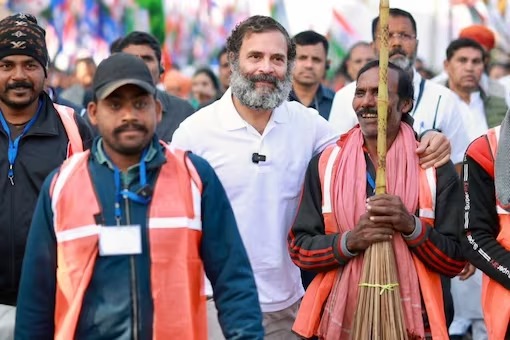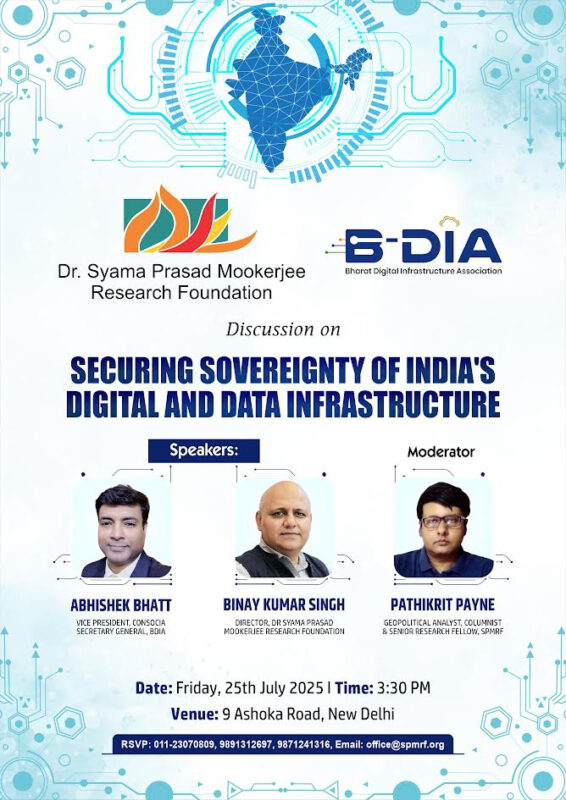Right before Congress leader Rahul Gandhi began the second phase of his Bharat Jodo Yatra, he led an attack on the party’s former ally, Samajwadi Party, saying the party lacks a national ideology. By making the statement, the Nehru-Indira scion was implying that on the national stage, the Congress is the formidable political force against BJP, with a national ideology. Even though Rahul made the statement in the context of Samajwadi Party, it did not go down well with the likes of Nitish Kumar, Mamata Banerjee and KCR, all of whom nurture the ambition of leading a united front of opposition parties. Rahul’s remark is thus sure to lead to an increased friction between these regional leaders who have for long been nursing individual dreams.
But the individual ambition of Congress or regional leaders is not the only hurdle in the way of opposition unity. A look at history makes it clear that neither the Congress learnt any lessons from the various coalition experiments that happened in India with regards to opposition unity, nor did the regional parties take lessons from the fundamental mistake made by parties in the past. It was the BJP alone that took the lessons, made necessary amends and moved towards success.
All parties, including the Congress, which are betting big on opposition unity to take on the BJP need to understand that all fronts formed solely with the aim to oust a party from power or carved out simply to oppose the government — not on the basis of the merit of a scheme or decision, but only for the sake of opposition — have been consigned to political oblivion. Even if such coalitions succeeded in making some impact in one election, they could not stand internecine battles and finally imploded. To understand this, revisiting a few instances from the past is necessary.
At the time of the first national elections in 1951-52, the parties opposed to the Congress did not have a strong numerical base. Yet, standing against the ideology of the Congress, parties like Jana Sangh, Hindu Mahasabha, Gana Tantra Parishad and Akali Dal came together in Parliament. The basis of their opposition was an ideology, not a person. As time passed and the Congress got centered on ‘person and family’, the basis of opposition organically shifted. And so, in the non-congressism slogans of Socialists, the opposition to ‘Nehru-Indira’ began to resonate regularly.
It can be said that the first systematic experiment of coalition on a significant scale happened in the Lok Sabha and assembly elections of 1967. Socialist parties and Jana Sangh joined forces in the elections. The ‘unity’ hinged on the goal of ousting the Congress – ‘remove Congress’. Congress lost power in some states. But within just two-three years this coalition crumbled. The Congress stomped back to power in 1971 under the leadership of Indira Gandhi.
The second, and grander, experiment of opposition unity came in 1977. While the coalition was bigger, it hinged on the same principle of defeating the incumbent government. As a result, it suffered the same fate as the Janata Party became a victim of internal squabbling and contradictions.
The third experiment on similar lines came in 1989 when the Janata Dal coalition was formed under the leadership of VP Singh, who left the Congress, to take on the Congress and remove Rajiv Gandhi from power. Even though the Congress lost, the fate of the coalition wasn’t any different. The internal battles within the Janata Dal paved the way for the Congress to return to power.
After the fall of the VP Singh government, the BJP leadership, which had spent close to four decades participating or leading coalition politics, had come to realise that an anti-establishment, opposition politics hankering for removing incumbent leaders and governments wasn’t viable politics in a vibrant democracy.
The BJP realised it had to look for a coalition formula that is centered on finding constructive ideas to run a government. The National Democratic Alliance formed under the leadership of Atal Bihari Vajpayee had this very idea as its guiding principle. The coalition not only worked then, but is going solid even now.
The Congress-led United Progressive Alliance was based on the same principle. The UPA coalition ran a government for 10 years. After 1998, the country never allowed a chance to opposition coalitions that oppose for the sake of opposing and aim only at overthrow of incumbent governments.
If one was to take lessons from history, the politics of ‘Remove Modi’ that we see in current times takes a leaf from the same old negative politics of coalitions whose examples abounded the past.
In a situation like this if Rahul Gandhi really has a national ideology, he must let the nation know about it because despite Rahul having covered the entire south and central India, neither his, nor his loyalists’, walking behind him, have spoken about this idea. Rahul is stuck on the narrative of ‘remove Modi’. If ‘remove Modi’s is the only idea that Rahul and the Congress have to offer the country then there should be no qualms about accepting that the Congress has sunk into an abyss of ideological bankruptcy.
After hugging those who have raised doubts over the Indian Army’s might, after shaking hands with those who raised slogans for India’s disintegration, after giving statements that hit at the interests of the nation, with a photo-op-powered PR, what is the idea with which Rahul Gandhi plans to go in the people’s court.
Much before Rahul Gandhi began his PR walk, PM Modi had fulfilled the task of ‘Bharat Jodo’ by removing Article 370 from Jammu and Kashmir. The Congress and Rahul are yet to clarify whether they support or oppose this real ‘Bharat Jodo’ move. While Nehru remained Prime Minister, thousands of sq km of Indian territory was occupied by China. Does Rahul’s Bharat Jodo carry the resolve to reclaim that lost territory? India was partitioned in 1947. The country broke into two. Does Rahul Gandhi’s Bharat Jodo carry any regret over that unfortunate chapter of history? If the Congress does not offer ideological clarity on these questions, what is the rationale of their much-touted slogan of Bharat Jodo?
During the course of his yatra, Rahul Gandhi repeatedly mentioned Adani-Ambani. If he has a problem with the way these industrialists run their business, Rahul and his party must tell the nation what is their thought on it. He must also clarify why Congress-led governments in Chhattisgarh and Rajasthan are entering into business agreements with the same industrialists.
Instead of criticising Modi government’s economic, social, defence, security and foreign policy, the Congress party must tell what is the alternative they have to offer the country. And if the Congress party’s policies were indeed so flawless then where should the blame for the historical blunders that happened during Congress rule rest?
Instead of harbouring the dream to achieve opposition unity on the basis of a national ideology, Rahul Gandhi must tell the people during Bharat Jodo yatra as to what exactly is his party’s constructive ideology for the country. Far from this, the Congress is in a utopian land where it believes the slogan of ‘remove Modi’ would do the trick for the party, catapulting it to power and Rahul Gandhi to the Prime Minister’s chair. If the congress does not take lessons from the history of coalition politics in India, it will face the same fate others faced.
At least for now, the country is in no mood to hear, accept or endorse the slogan of ‘remove Modi’.
The writer is a Senior Research Fellow with the Dr. Syama Prasad Mookerjee Research Foundation. Views expressed are strictly personal.
(The views expressed are the author's own and do not necessarily reflect the position of the organisation)


